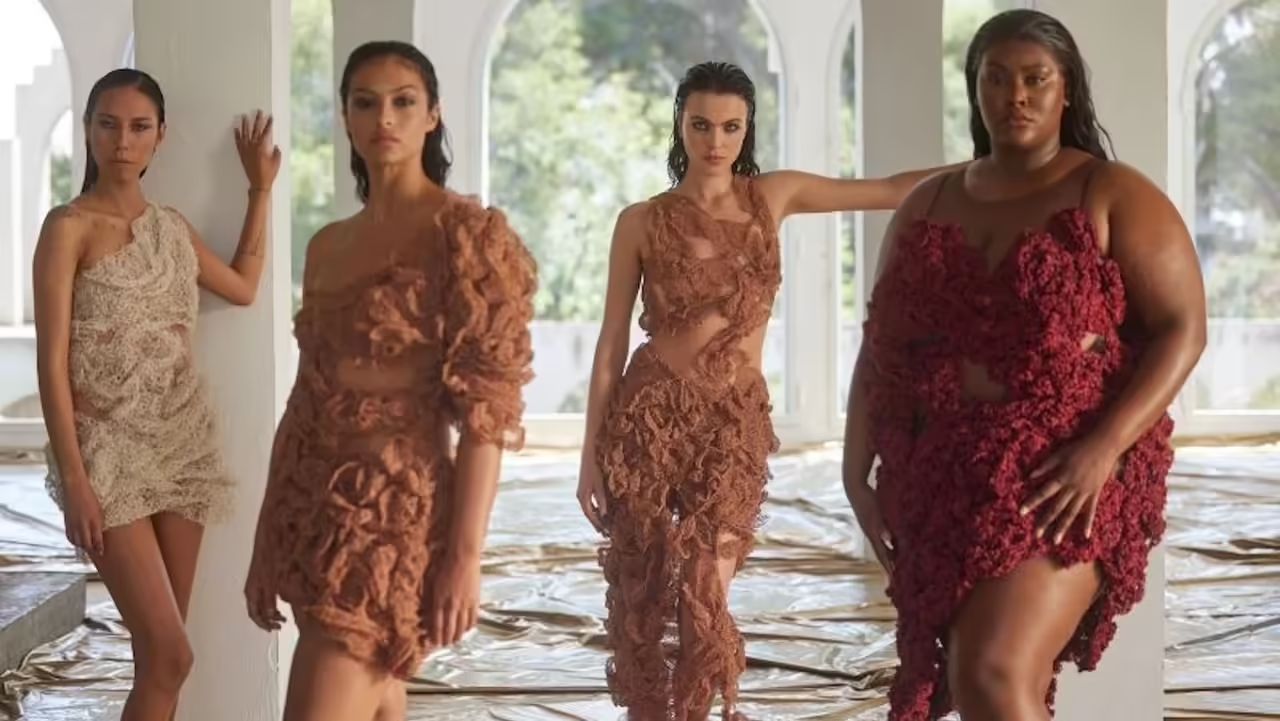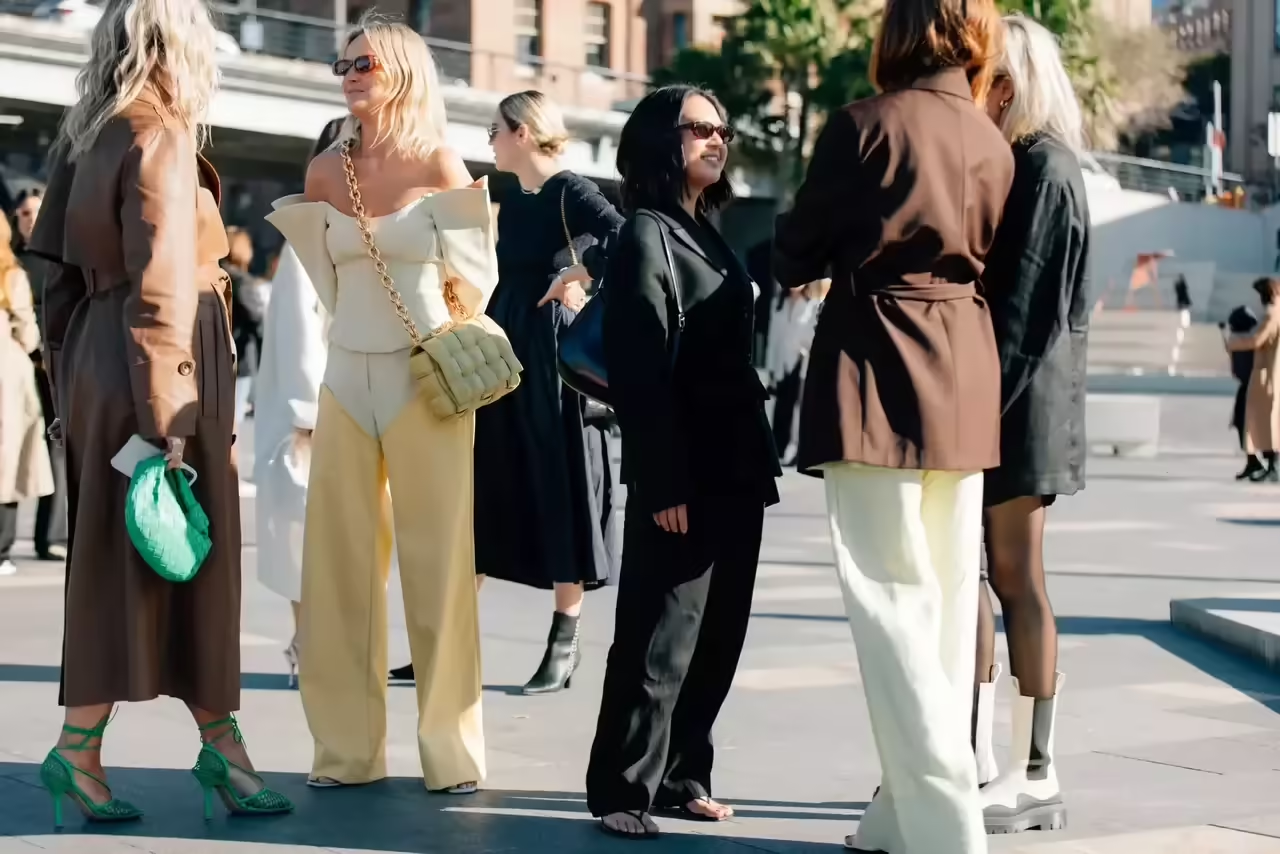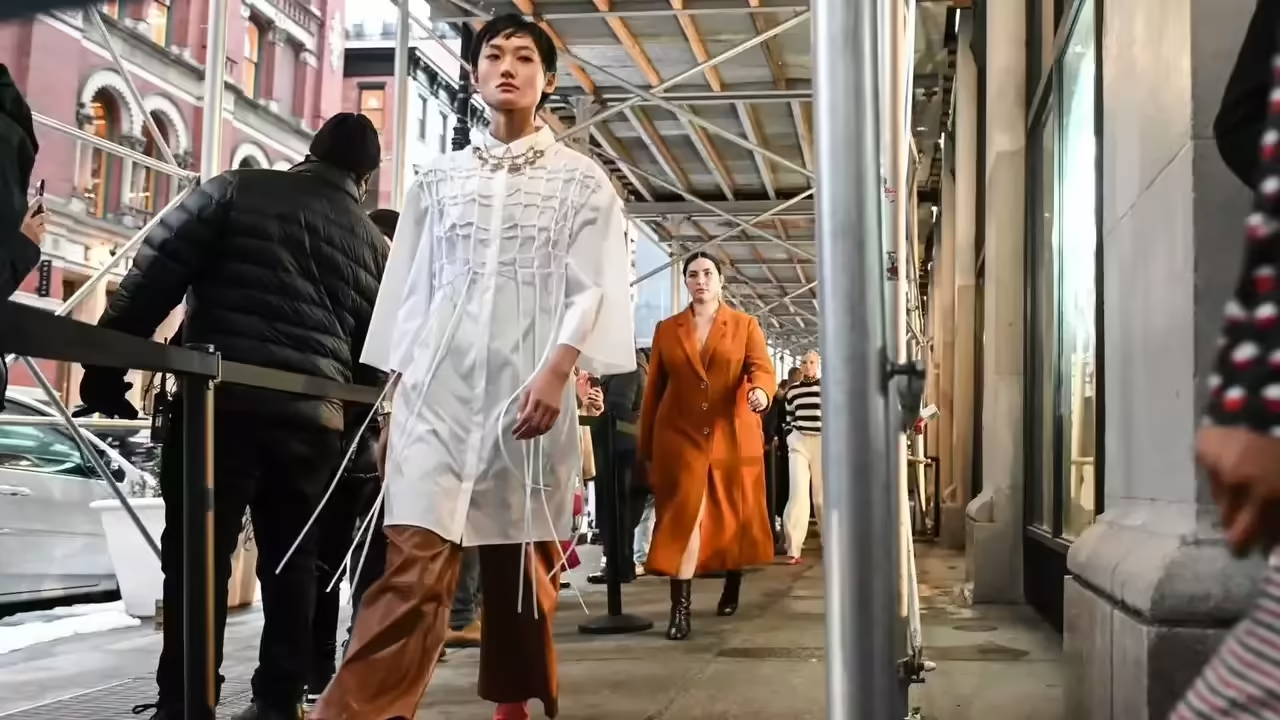
Fashion, as an artistic and cultural expression, has found an inexhaustible source of inspiration in nature throughout the centuries. The connection between fashion and the natural environment goes beyond simple seasonal trends; it is an intrinsic relationship that has evolved and transformed over time.
Creative Ecosystem: Nature as a Source of Inspiration
The beauty of nature has captured the imagination of fashion designers since time immemorial. The color palette found in a sunset, the texture of autumn leaves, or the simple elegance of a spring flower – all these elements have been interpreted into fabrics, prints, and designs adorning runways worldwide.
The versatility of nature is reflected in the diversity of styles emerging from it. From tropical lushness to the serenity of winter landscapes, designers find in nature an infinite palette of possibilities. The fluidity of natural elements translates into collections ranging from organic and minimalist to vibrant and extravagant.
Sustainability and Environmental Awareness in Fashion
In the current era, where sustainability and environmental awareness are imperatives, the connection between fashion and nature takes on a deeper dimension. Designers and brands are exploring eco-friendly materials, sustainable production techniques, and business models that respect the environment. Natural inspiration not only translates into prints and colors but also into practices aiming to preserve the beauty that serves as inspiration.
The Power of Natural Symbolism in Design
Nature not only provides an aesthetic source but also a symbolic one. Many designers use natural elements to convey deeper messages in their creations. The lotus flower as a symbol of purity, the tree of life as a representation of the connection between all forms of life – these are examples of how fashion becomes a medium of expression beyond the visual.
The Evolution of Natural Inspiration Over Time
Throughout history, we have seen how natural inspiration has evolved and adapted to changing cultural and aesthetic sensibilities. From the intricate forms of Art Nouveau to the elegant simplicity of contemporary minimalism, nature has been a constant influence on fashion trends in each era.
Ecosystems as Color Palettes: How Nature’s Colors Influence Fashion Trends
On the vast canvas of fashion, colors play a fundamental role, dictating trends, evoking emotions, and creating a visual narrative. One of the richest places to find chromatic inspiration is undoubtedly nature. In this article, we will explore how ecosystems become authentic color palettes that influence fashion trends, bringing to life creations that capture the essence and diversity of our natural environment.
Nature as a Pioneer of Color
From the warm, earthy tones that evoke the land to the serene blues of the sky and the lush greens of vegetation, nature has been an endless source of inspiration for fashion designers. The color palette found in ecosystems offers an infinite variety of shades and combinations, serving as a starting point for the creation of vibrant and expressive collections.
Seasons: A Ever-Changing Color Wheel
Seasons play a crucial role in the evolution of color trends. The transition from winter to spring, with its cool and fresh tones transforming into warmer and brighter colors, is reflected in seasonal fashion collections. Designers, like nature, follow an ever-changing color wheel, adapting to natural cycles and reinterpreting hues according to seasonal sensitivities.
Inspiration in Fauna and Flora
The richness of colors present in fauna and flora also plays a significant role in inspiring designers. From the intense hues of exotic bird feathers to the soft petals of flowers, fashion appropriates the vibrant diversity of natural life. Prints, embroideries, and fabrics mimic the complexity and beauty of nature, resulting in garments that are authentic chromatic artworks.
Sustainability and Eco-Friendly Colors
In the era of sustainability, eco-friendly colors have become a significant trend. Earth tones, subtle greens, and blues inspired by clean oceans are increasingly prominent in ethical and sustainable fashion collections. This connection with nature is not only manifested in aesthetics but also in the choice of environmentally friendly dyes and materials.
The Psychology of Natural Color
In addition to visual appeal, the colors of nature also evoke emotional responses. Green, associated with freshness and vitality, can convey a message of renewal and hope. Warm tones like yellow and orange can evoke the warmth of the sun, creating a sense of joy and positivity. Designers understand the psychology of natural color and use it to communicate messages and create sensory experiences through fashion.
Textures Imitating Nature: Discovering How Designers Incorporate Natural Elements into Their Creations
In the fashion universe, the quest for authenticity and a connection with nature has led designers to explore beyond the color palette and delve into the fascinating world of natural textures. From the softness of a leaf to the roughness of tree bark, textures imitating nature have emerged as a distinctive form of creative expression. In this article, we will explore how designers have adopted and reinterpreted natural textures to bring garments to life that go beyond visual aesthetics and seek to evoke sensory experiences.
Diversity of Natural Textures
Nature offers a wealth of textures ranging from delicate to robust. Tree leaves, river stones, the softness of sand – each element has its own tactile imprint. Designers have brought these textures into the world of fashion, experimenting with fabrics and materials that emulate the sensation of touching nature. From ethereal silks evoking the softness of petals to rougher fabrics reminiscent of bark’s roughness, fashion becomes a medium to explore the rich tactile variety of our surroundings.
Innovation in Materials: Sustainability and Authenticity
Growing environmental awareness has led designers to seek sustainable materials that mimic natural textures. Organic fabrics, vegetable leathers, and recycled fibers are examples of fashion innovation aiming to capture the authenticity of natural textures without compromising sustainability. These materials not only offer a unique tactile experience but also advocate for environmentally friendly design practices.
Fabrics and Prints Inspired by Nature
Fabrics and prints inspired by nature are a direct manifestation of how designers incorporate textures from the natural world into their creations. From patterns mimicking the geometry of leaves to fabrics replicating the softness of an animal’s skin, fashion becomes an art form seeking to capture the tactile essence of nature. Botanical prints and designs inspired by elements such as seashells or tree barks add visual and tactile layers to contemporary fashion.
Craftsmanship as a Bridge Between the Natural and the Manufactured
Craftsmanship plays a crucial role in incorporating natural textures into fashion. The artisans’ skill in working materials and creating textures by hand allows for a more intimate connection with nature. Sewing, embroidery, and fabric manipulation are techniques that enable designers to recreate the complexity of natural textures, bringing a tactile and emotional dimension to their creations.
Textures that Tell Stories: Narrative through Touch
Beyond aesthetics, natural textures in fashion also serve as storytellers. A garment with a rough texture can evoke the resilience and strength of nature, while a soft texture can convey a sense of delicacy and tenderness. Designers use these textures to create pieces that are not only visually appealing but also trigger sensory and emotional experiences for those who wear them.
Flora and Fauna in the Fashion World: The Impact of Plants and Animals on Prints and Designs. Sustainability and Nature-Inspired Fashion
The intersection between fashion and nature has led designers to explore the rich diversity of flora and fauna as a source of inspiration. From exquisite prints to intricate designs, the influence of plants and animals in fashion not only reflects a visual aesthetic but also emphasizes the importance of sustainability and environmental awareness in the industry.
Prints that Tell Natural Stories
Flora and fauna offer a vast repertoire of colors, patterns, and shapes that have found their way into fashion. Floral prints, for example, are a timeless classic that has evolved from realistic representations to abstract interpretations. From delicate daisies to lush orchids, fashion becomes a canvas where plants and flowers tell their own natural stories.
Designers also draw inspiration from fauna to create memorable prints. From the majesty of felines to the grace of birds, animal patterns add a wild and elegant dimension to garments. Leopards, zebras, and exotic birds become protagonists on runways and displays, transforming fashion into an artistic expression that celebrates biodiversity.
Sustainability: A Commitment to Nature
In a world where sustainability is essential, nature-inspired fashion has become a vehicle to promote environmentally friendly practices. Designers committed to environmental responsibility have opted for organic materials and eco-friendly manufacturing processes. Fabrics such as organic cotton and sustainable silk are used to create garments that not only incorporate natural elements in design but also respect the cycles of nature.
Sustainable fashion inspired by flora and fauna goes beyond materials; it also encompasses ethical production and conscious consumption. Recycling garments, using natural dyes, and reducing waste are practices adopted by designers aiming to minimize the environmental impact of fashion.
Biodiversity as a Source of Creativity
The richness of biodiversity becomes an infinite source of creativity for designers. The variety of colors in bird feathers, the complexity of textures in animal skins, and the symmetry of plant leaves inspire not only prints but also the structure and shape of garments. Fashion becomes a tribute to the complexity and beauty of life on Earth.
Awareness and Social Responsibility
Fashion inspired by flora and fauna not only involves an aesthetic connection with nature but also a call to awareness and social responsibility. Designs incorporating natural elements often carry a message about the importance of preserving biodiversity and protecting the habitat of plants and animals. Collaborations between designers and conservation organizations reinforce this commitment, using fashion as a platform for environmental education and action.
In conclusion, flora and fauna have intricately woven their influence into the world of fashion, transforming garments into visual testimonies of the beauty and complexity of nature. Sustainability and environmental awareness have become essential, leading fashion to adopt practices that not only celebrate flora and fauna but also actively work towards their preservation. In a world seeking balance with nature, fashion inspired by biodiversity stands as a tangible reminder of the shared responsibility to protect and appreciate our natural environment.







